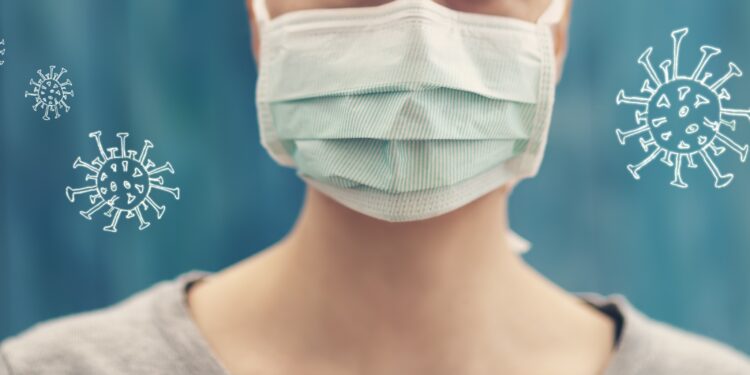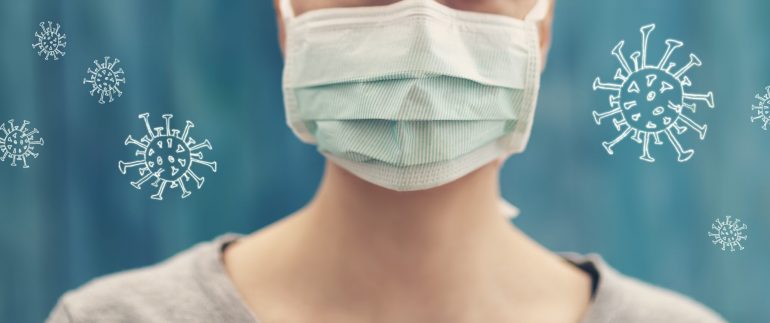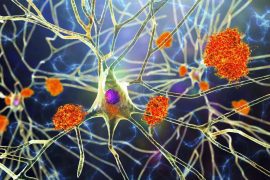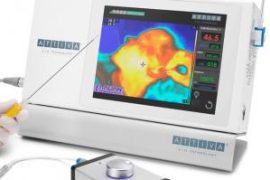
Biosensors in masks could help with COVID-19 diagnosis
Many people feel unsafe during the COVID-19 pandemic after coming into contact with other people. Have I become infected or have I infected others? There is usually no quick answer to such questions. A US research team has now found a way to integrate biosensors into face masks and other textiles to obtain a quick response to the presence of pathogens such as SARS-CoV-2.
Researchers from the Wyss Institute for Biologically Inspired Engineering at Harvard University and the Massachusetts Institute of Technology have found a way to embed wearable biosensors in textiles that can rapidly and accurately detect viruses such as SARS-CoV-2 and other pathogens or toxins. enables installation. The research was recently published in the renowned specialist journal “Nature Biotechnology” Presented.
mask breath check
The biosensors can be individually adjusted to alert the wearer as soon as certain viruses, pathogens or toxins are detected. With the new technology, the working group initially wants to produce a face mask that checks whether the breath contains the SARS-CoV-2 type of coronavirus.
Accuracy compared to PCR test
Biosensors are activated at the push of a button and analyze the wearer’s breath. Integrated biosensors can determine whether there is a SARS-CoV-2 infection within 90 minutes. According to the working group, the accuracy is on par with the results of a PCR test.
Face masks in a clinical laboratory
“We have essentially reduced an entire diagnostic laboratory into a tiny, synthetic biology-based sensor that works with any face mask and provides PCR tests with the speed and low cost of antigen tests. high accuracy,” Peter Nguyen with the research team.
Not only suitable for face mask
“In addition to face masks, our programmable biosensors can be integrated into other items of clothing to detect dangerous substances such as viruses, bacteria, toxins and chemical substances in the environment,” says Nguyen.
Biosensors from freeze-dried cells
The researchers are particularly proud of the SARS-CoV-2 biosensor, which emerged from three years of research. It is based on a technique in which cells read DNA and in the process produce some RNA and proteins. These cells are freeze-dried and activate when exposed to water.
These biological elements can be stored for long periods of time and can be equipped with synthetic circuits that, when activated, convert the cells’ responses into a perceptible signal.
First applied to Zika virus
The underlying technology was first used in 2015 during the Zika virus outbreak. There, a similar biosensor was integrated onto a piece of paper to create a portable and inexpensive diagnostic tool for virus detection. The biosensors now presented are a further development of this technology.
“We wanted to contribute to the global fight against the virus and came up with the idea of integrating biosensors into face masks to detect SARS-CoV-2,” explains Luis Soenxen, first co-author. the study. The entire project was quarantined from May 2020 and was carried out under strict social distancing.
How do biosensors recognize SARS-CoV-2?
As the working group reports, initially a small amount of water is released at the push of a button, which activates the biosensor. When the sensors are exposed to SARS-CoV-2, a reaction occurs in which the virus membrane is cut open and the RNA is exposed. This is followed by a second reaction that makes copies of a specific gene in the virus’s spike protein. These copies can then be visualized by the third reaction, indicating the presence of SARS-CoV-2.
Users are then informed as a straight line pattern based on the principle of a pregnancy test whether SARS-CoV-2 is present in their breath. As the team explains, the SARS-CoV-2 biosensor is the first portable and easy-to-use test option that operates at room temperature and enables rapid, laboratory-free screening with the accuracy of PCR testing.
The birth of the face mask diagnosis?
Professor Jim Collins, senior author of the study, said: “This work demonstrates that our freeze-dried, cell-free synthetic biology technique works on fabrics and can be used for novel clinical applications, including the development of face mask diagnosis. can be done for.” The technology could be transferred to other pathogens such as influenza. (VB)
Author and source information
This text complies with the requirements of specialist medical literature, medical guidelines and current studies and has been checked by medical professionals.
Author:
Diploma-Editor (FH) Volker Blasek
hilarious:
- Harvard University: Face masks may help diagnose COVID-19 (veröffentlicht: 28.06.2021), news.harvard.edu
- Peter Q. Nguyen, Louis R. Soenxen, Nina M. Donghia, et al: Wearable materials with embedded synthetic biology sensors for biomolecule detection; In: Nature Biotechnology, 2021, nature.com
Important Articles:
This article is for general guidance only and is not to be used for self-diagnosis or self-treatment. He cannot take the place of visiting the doctor.

Web guru. Amateur thinker. Unapologetic problem solver. Zombie expert. Hipster-friendly travel geek. Social mediaholic.





